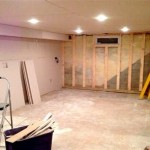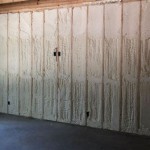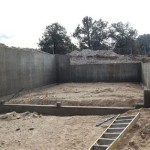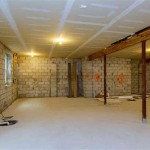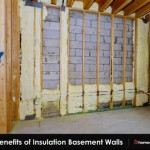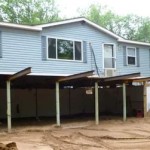How To Size A Dehumidifier For Your Basement
Maintaining a healthy and comfortable environment in a basement requires careful attention to humidity levels. Basements, often located below ground level, are susceptible to moisture intrusion due to poor ventilation, groundwater seepage, and condensation. Excess humidity promotes mold growth, encourages pest infestations, and damages stored belongings. A dehumidifier is an essential appliance for mitigating these issues, but its effectiveness hinges on selecting a unit with the appropriate capacity for the specific basement conditions. Determining the correct size of a dehumidifier is crucial for optimal performance and energy efficiency. An undersized unit will struggle to reduce humidity to the desired level, while an oversized unit may cycle on and off too frequently, leading to wasted energy and potential damage to the appliance itself.
This article provides a comprehensive guide to sizing a dehumidifier for a basement, considering factors such as square footage, moisture conditions, and other relevant considerations. Understanding these factors will enable homeowners to make an informed decision and choose a dehumidifier that effectively manages humidity, protecting their property and promoting a healthier living environment.
Assessing Basement Square Footage
The primary factor in determining dehumidifier size is the square footage of the basement. Dehumidifiers are rated by the amount of moisture they can remove from the air in a 24-hour period, measured in pints. A larger basement requires a dehumidifier with a higher pint capacity. The following guidelines provide a general starting point for selecting a dehumidifier based on square footage:
- 500 square feet or less: A 30-pint dehumidifier is typically sufficient.
- 500 to 1,000 square feet: A 40-pint dehumidifier is recommended.
- 1,000 to 1,500 square feet: A 50-pint dehumidifier is generally appropriate.
- 1,500 to 2,000 square feet: A 70-pint dehumidifier may be necessary.
- Over 2,000 square feet: A 90-pint dehumidifier or larger may be required, or multiple units might be a better solution.
These are general recommendations and serve as a starting point. The next step involves evaluating the moisture conditions within the basement.
Evaluating Moisture Conditions
The level of moisture present in the basement significantly impacts the required dehumidifier capacity. Basements with higher moisture levels need more powerful dehumidifiers to effectively reduce humidity. Moisture conditions are typically categorized as:
- Slightly Damp: This condition is characterized by a musty odor, but no visible signs of moisture.
- Damp: This condition includes a noticeable musty odor and may have a slightly clammy feel. Condensation may be present on cold surfaces.
- Very Damp: This condition exhibits a strong musty odor, visible moisture on walls or floors, and potential mold growth.
- Wet: This condition indicates standing water or actively leaking walls. Addressing the source of the water intrusion is crucial before selecting a dehumidifier.
Adjust the dehumidifier size based on the moisture condition. For a slightly damp basement, the square footage guidelines are generally accurate. However, for damp basements, increase the recommended pint capacity by one level. For very damp basements, increase the recommended pint capacity by two levels. If the basement is wet, focusing on resolving the water intrusion issue is paramount. After addressing the source of the water, reassess the moisture condition and select a dehumidifier accordingly. A wet basement might require professional waterproofing services before a dehumidifier can be effective.
For example, if a basement is 800 square feet and considered damp, a 50-pint dehumidifier, rather than the initially recommended 40-pint unit, is a more suitable choice.
Considering Additional Factors
Beyond square footage and moisture conditions, several other factors influence the appropriate dehumidifier size. These include:
- Ceiling Height: Basements with high ceilings have a larger air volume, requiring a more powerful dehumidifier to effectively reduce humidity. For ceilings higher than 8 feet, consider increasing the recommended pint capacity.
- Insulation: Poorly insulated basements are more susceptible to temperature fluctuations and condensation, increasing humidity levels. In such cases, selecting a dehumidifier with a higher pint capacity is advisable.
- Ventilation: Basements with poor ventilation tend to trap moisture, leading to higher humidity levels. While improving ventilation is beneficial, a dehumidifier can help manage humidity in the meantime.
- Foundation Type: Earth floors are a significant source of moisture intrusion. Basements with earth floors require more powerful dehumidifiers. Consider sealing the floor with a vapor barrier before relying solely on a dehumidifier.
- Usage: Frequent use of appliances that generate moisture, such as washing machines and dryers, in the basement can increase humidity levels. If these appliances are used regularly, choose a dehumidifier with a higher pint capacity.
- Climate: Geographic location and climate significantly influence basement humidity levels. Humid climates generally require more powerful dehumidifiers.
- Air Leaks: Cracks in the foundation, gaps around windows and doors, and other air leaks allow humid outdoor air to enter the basement, increasing the dehumidifier's workload. Sealing these leaks can reduce the required dehumidifier capacity and improve energy efficiency.
Taking these additional factors into account allows for a more precise determination of the appropriate dehumidifier size. A thorough assessment of the basement environment is essential for optimal humidity control.
Choosing Dehumidifier Features and Technologies
Beyond pint capacity, various dehumidifier features and technologies can enhance performance and convenience. Consider the following:
- Automatic Humidistat: This feature allows the user to set a desired humidity level. The dehumidifier will automatically turn on and off to maintain that level, conserving energy.
- Automatic Defrost: In colder basements, frost can form on the dehumidifier's coils, reducing its efficiency. Automatic defrost cycles melt the frost, ensuring optimal performance.
- Continuous Drain Option: This feature allows the dehumidifier to be connected to a drain, eliminating the need to manually empty the collection bucket. This is particularly useful for basements with high humidity levels.
- Built-in Pump: If a floor drain is not readily accessible, a dehumidifier with a built-in pump can pump the collected water upwards to a sink or other suitable drain.
- Energy Star Certification: Energy Star certified dehumidifiers meet strict energy efficiency guidelines, saving money on electricity bills.
- Air Filter: A built-in air filter removes dust and allergens from the air, improving air quality in addition to reducing humidity. Regularly cleaning or replacing the filter is essential for optimal performance.
- Low Temperature Operation: Some dehumidifiers are designed to operate efficiently at lower temperatures, which is crucial for basements that tend to be cooler.
- Noise Level: Consider the noise level of the dehumidifier, especially if the basement is used as a living space. Look for models with a quiet operation rating.
Selecting a dehumidifier with the appropriate features can significantly improve its effectiveness and ease of use. Prioritize features that address the specific needs of the basement environment.
Addressing Underlying Moisture Problems
While a dehumidifier effectively mitigates the symptoms of excess humidity, it is essential to address the underlying causes to achieve long-term humidity control. A dehumidifier is a treatment, not necessarily a cure. Common sources of moisture intrusion in basements include:
- Groundwater Seepage: Cracks in the foundation, inadequate drainage, and high water tables can allow groundwater to seep into the basement. Repairing foundation cracks, improving landscaping to direct water away from the foundation, and installing a sump pump can help prevent groundwater seepage.
- Condensation: Warm, humid air coming into contact with cold surfaces, such as concrete walls, can cause condensation. Insulating basement walls can reduce condensation and improve energy efficiency.
- Rainwater Runoff: Improperly sloped landscaping or clogged gutters can cause rainwater to accumulate around the foundation, increasing the risk of water intrusion. Ensure that the landscaping slopes away from the foundation and that gutters are clean and functioning properly.
- Plumbing Leaks: Leaky pipes or fixtures can introduce moisture into the basement. Regularly inspect plumbing for leaks and repair them promptly.
Addressing these underlying moisture problems can significantly reduce the burden on the dehumidifier and improve its overall effectiveness. In severe cases, professional waterproofing services may be necessary.
Placement and Maintenance of the Dehumidifier
Proper placement and maintenance are crucial for optimizing the performance of a dehumidifier. Follow these guidelines:
- Placement: Place the dehumidifier in a central location in the basement, away from walls and furniture, to allow for optimal air circulation. Avoid placing it in a corner or against a wall, as this can restrict airflow.
- Regular Cleaning: Clean the dehumidifier's air filter regularly, typically every one to three months, to remove dust and debris. A dirty filter reduces airflow and decreases the dehumidifier's efficiency.
- Emptying the Collection Bucket: Empty the collection bucket regularly, or connect the dehumidifier to a drain if equipped with a continuous drain option. Allowing the bucket to overflow can damage the dehumidifier and create a mess.
- Annual Maintenance: Consider having the dehumidifier professionally serviced annually to ensure optimal performance and longevity. A qualified technician can clean the coils, check the refrigerant levels, and identify any potential problems.
Following these guidelines will ensure that the dehumidifier operates efficiently and effectively, providing long-term humidity control in the basement.
Professional Consultation
In complex situations, such as basements with significant moisture problems or unique structural characteristics, consulting with a professional is advisable. A qualified contractor or home inspector can assess the basement environment, identify the sources of moisture intrusion, and recommend the appropriate dehumidifier size and any necessary repairs or improvements. A professional assessment can provide valuable insights and ensure that the chosen dehumidifier is the best fit for the specific needs of the basement.

What Size Dehumidifier Do You Need Reviewed

5 Things To Consider When Buying A Dehumidifier

What Size Dehumidifier Do I Need For Basements Rooms Whole House

How To Choose The Right Size Dehumidifier Home

What Capacity Dehumidifier Do I Need

What Size Dehumidifier Do I Need Chart

How To Choose The Size Of A Dehumidifier 10 Steps With S

How To Choose The Right Size Dehumidifier Home

New Dehumidifier Testing Standards For 2024 Sylvane

How To Size A Crawl Space Or Basement Dehumidifier Sylvane
Related Posts
